Wildlife pond edging ideas: 10 nature-friendly designs for your backyard
These stylish wildlife pond edging ideas will encourage small creatures and insects to visit your plot
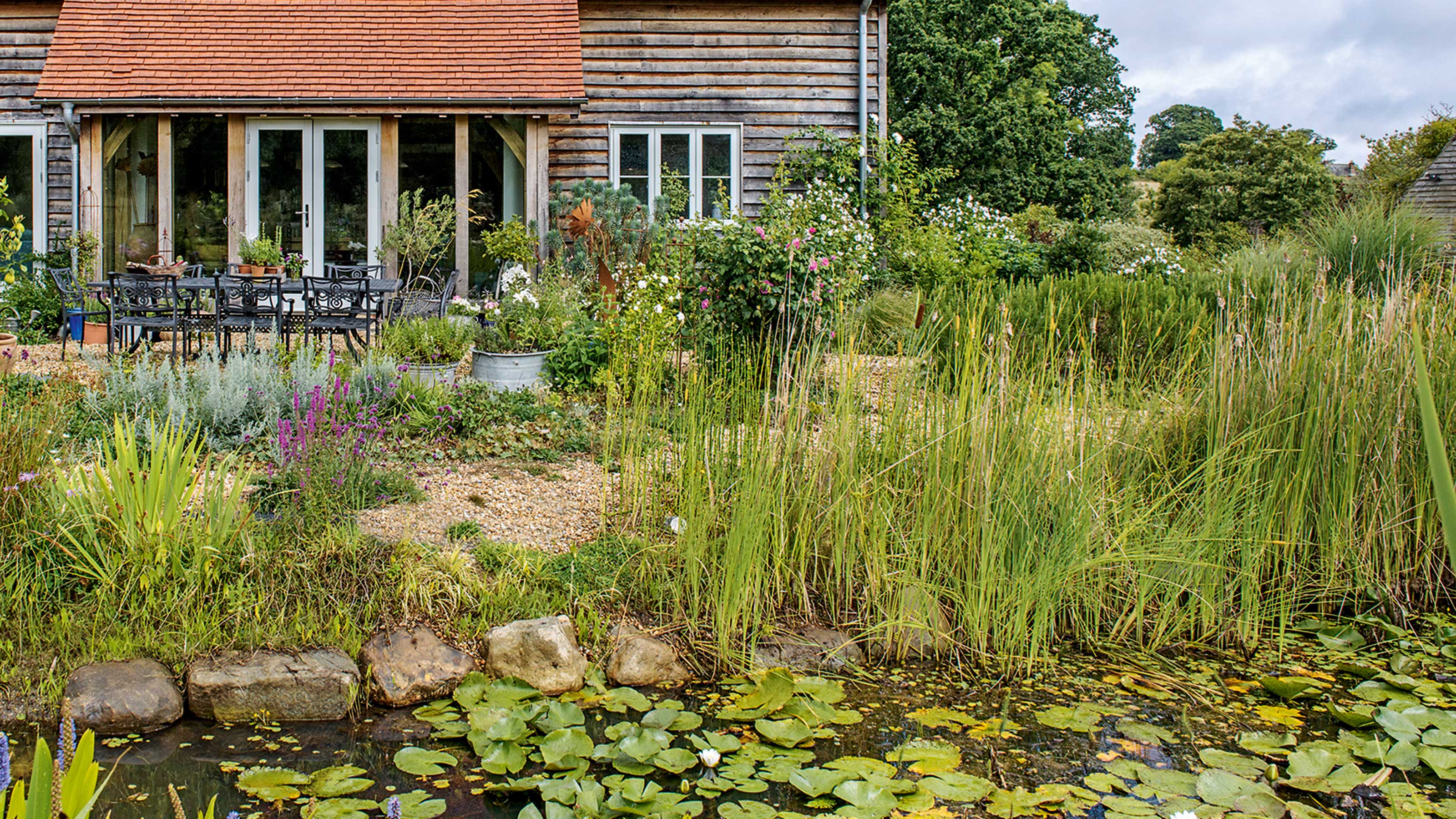

There are plenty of wildlife pond edging ideas you can add to your design to welcome small visitors. And many will offer extra aesthetic appeal, too.
You may already know how beneficial a garden pond is for insects, amphibians, birds, and even small mammals such as hedgehogs. They provide a valuable environment to drink, feed and reproduce. Plus, the life they attract is a delight for all ages to observe. As The Wildlife Trusts says, a pond 'is one of the best ways you can help wildlife and enjoy the benefits of seeing water plants, birds and bees close to home.' What's more, adding a wildlife pond to a backyard is especially important nowadays, as nearly 70 per cent of ponds have been lost from the UK countryside alone in the past century, explains the RHS.
But one thing that's easy to overlook is the edging of your wildlife pond. And to create the best environment possible, there are some things to consider. We've rounded up plenty of tips and ideas below to make your pond as nature-friendly as possible.
Wildlife pond edging ideas: 10 looks to try
These wildlife pond edging ideas will help turn your pond into a haven for creatures great and small.
1. Create a pebbled bank
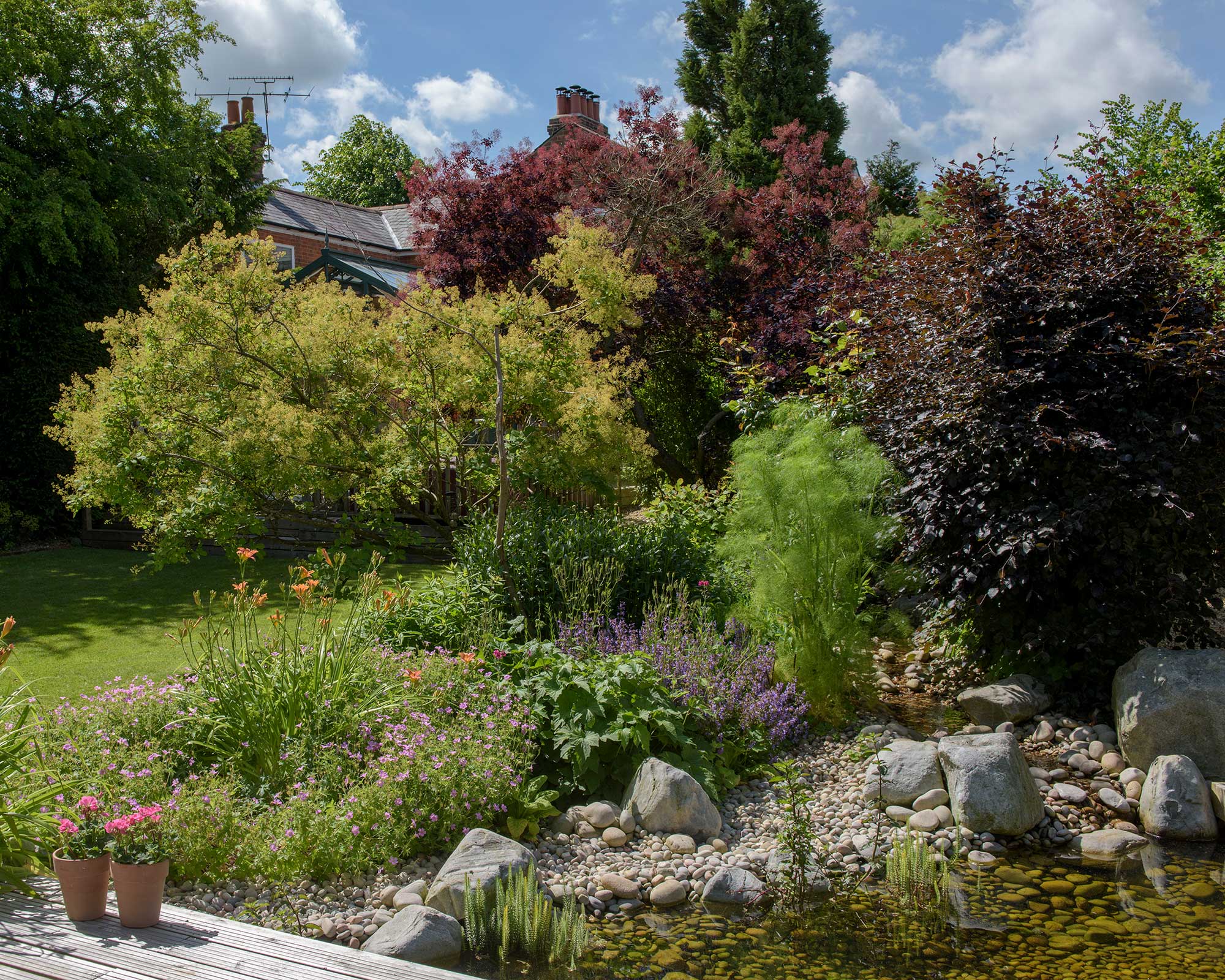
Pebbles make an attractive edge to this wildlife pond
Adding plenty of pebbles of various sizes in and around your pond not only looks pretty but is beneficial to wildlife too.
Butterflies will enjoy basking on the warm stones in the sun, birds can perch on them whilst they take a drink, and larger stones will provide hiding spaces for small creatures such as newts. You can also use the pebbles to build up shallower areas, which will allow smaller animals to be able to get in and out of the water easily.
Keep the look informal rather than neatly ordered for a more authentic appearance. Adding in plenty of the best pond plants – both in to the water itself and around the borders – will add an extra dose of color as well as a place for wildlife to shelter.
2. Add a pocket of planting to a shallow pond
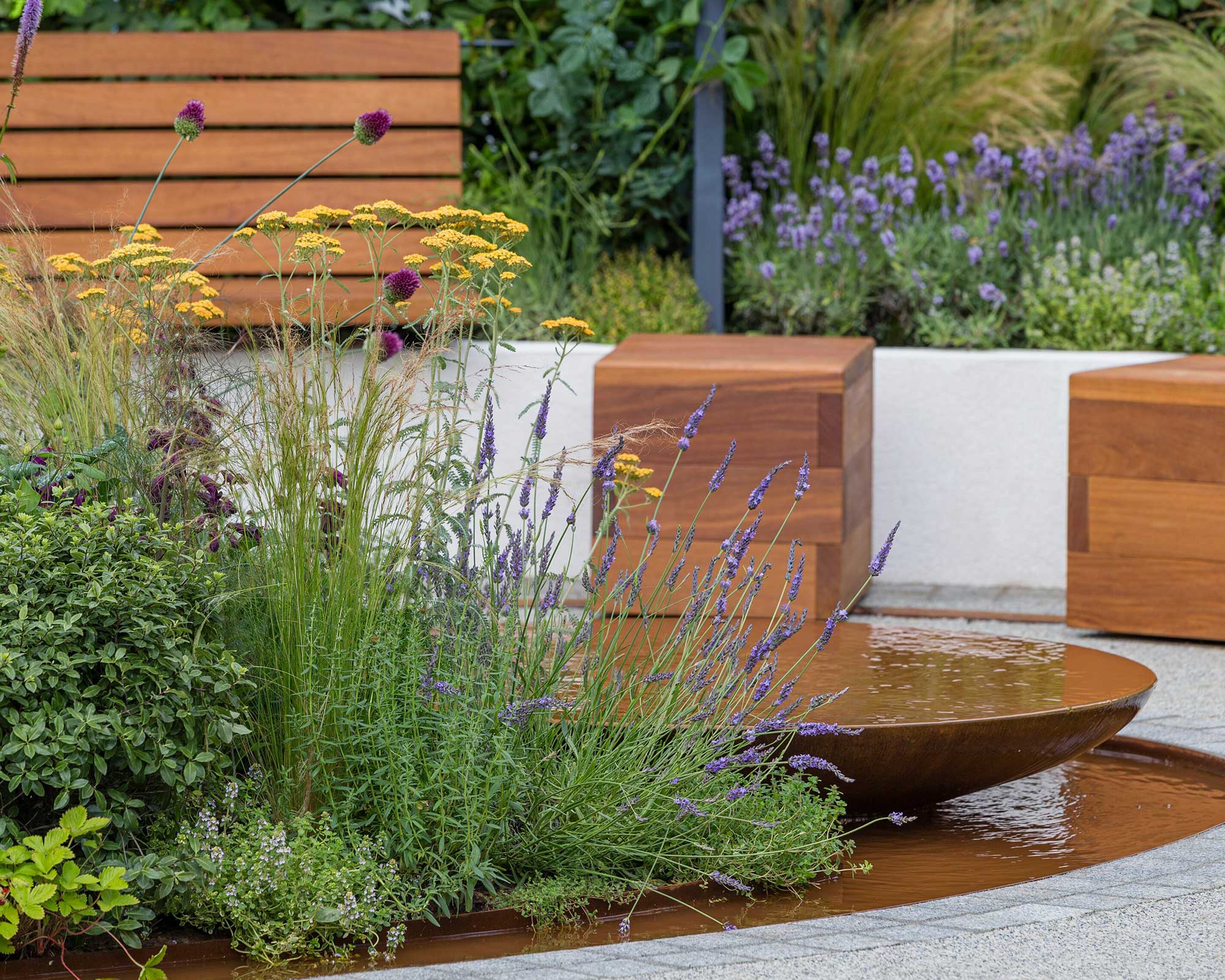
The 'Crest Nicholson Livewell Garden', designed by Aleksandra Bartczak (David Jarvis Associates) at RHS Hampton Court Palace Garden Festival 2019
When you think of a wildlife pond, something as smart as this design at RHS Hampton Court Garden Festival may not spring to mind. However, even a chic Corten steel set-up can be an oasis for small creatures – a perfect solution if you're a fan of modern garden ideas.
For starters, the rill which surrounds the water bowl is shallow enough to allow even small birds to easily wash their wings and take a drink. But it's the plants that line the inner edge that really steal the show. These nectar-rich blooms include the likes of Allium sphaerocephalon and the jolly yellow achillea 'Terracotta' and have been carefully selected to attract a wide array of wildlife and pollinators. We think you'll agree that they bring a ton of visual appeal, too.
3. Soften a modern shape with gravel and greenery
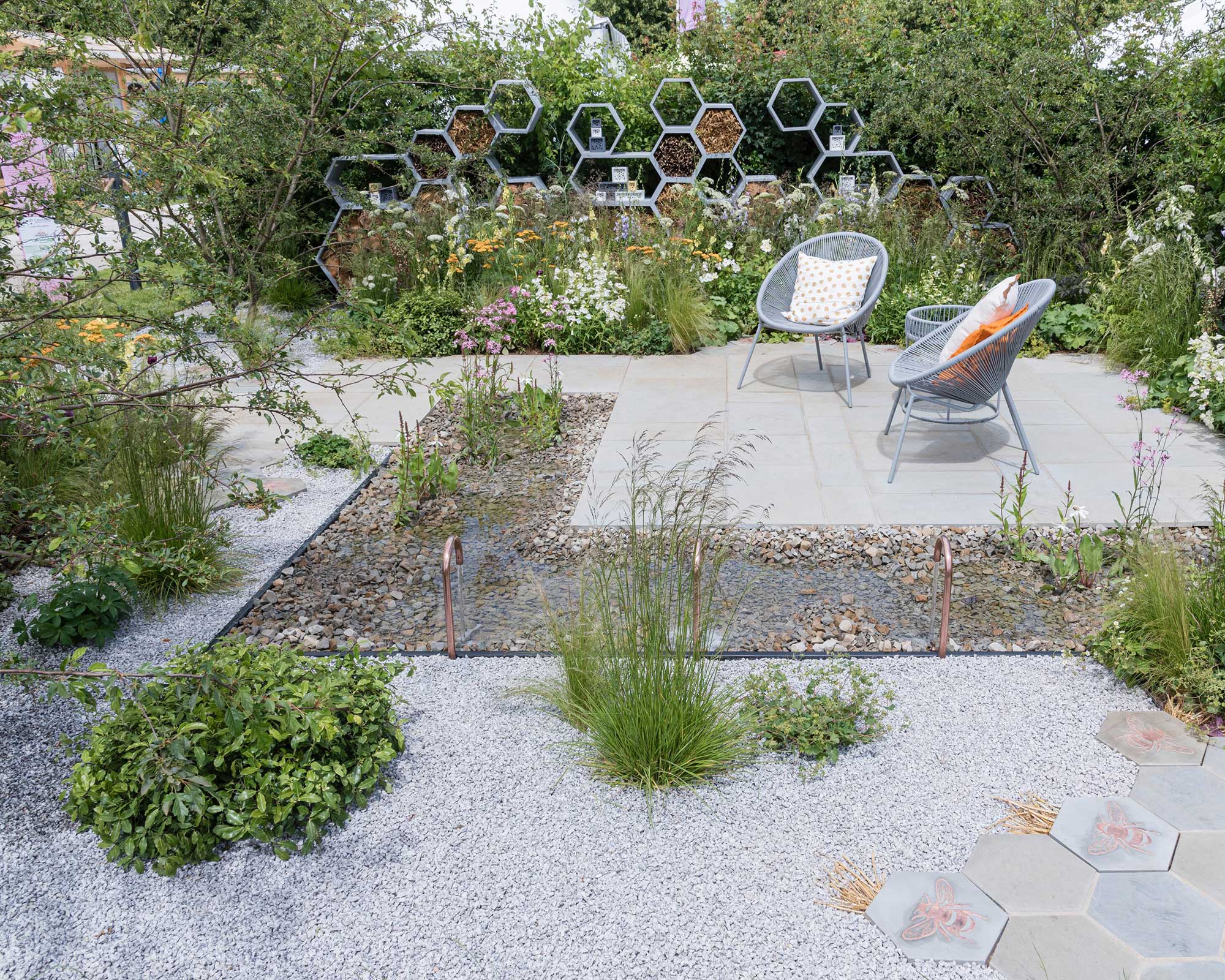
'The Urban Pollinator', designed by Caitlin McLaughlin for RHS Hampton Court Palace Garden Festival 2019
Here's another contemporary look from the RHS Hampton Court Palace Garden Festival that would still welcome all manner of wildlife due to its clever design.
The water feature is bordered with sleek edging which keeps the angled shape neatly distinct. However, due to its shallow depth and the use of gravel, it provides easy access for visiting creatures. Adding small fountains along one edge will also help to keep the water oxygenated which will improve its quality – plus, it adds an on-trend, industrial tone.
Pond plants are dotted throughout the design to soften the look. To the right, just out of shot, denser planting merges seamlessly from the shallow pond to the surrounding borders, creating an ideal habitat for wildlife. You can find more wildlife garden ideas in our dedicated guide.
4. Add a dense planting area to one side
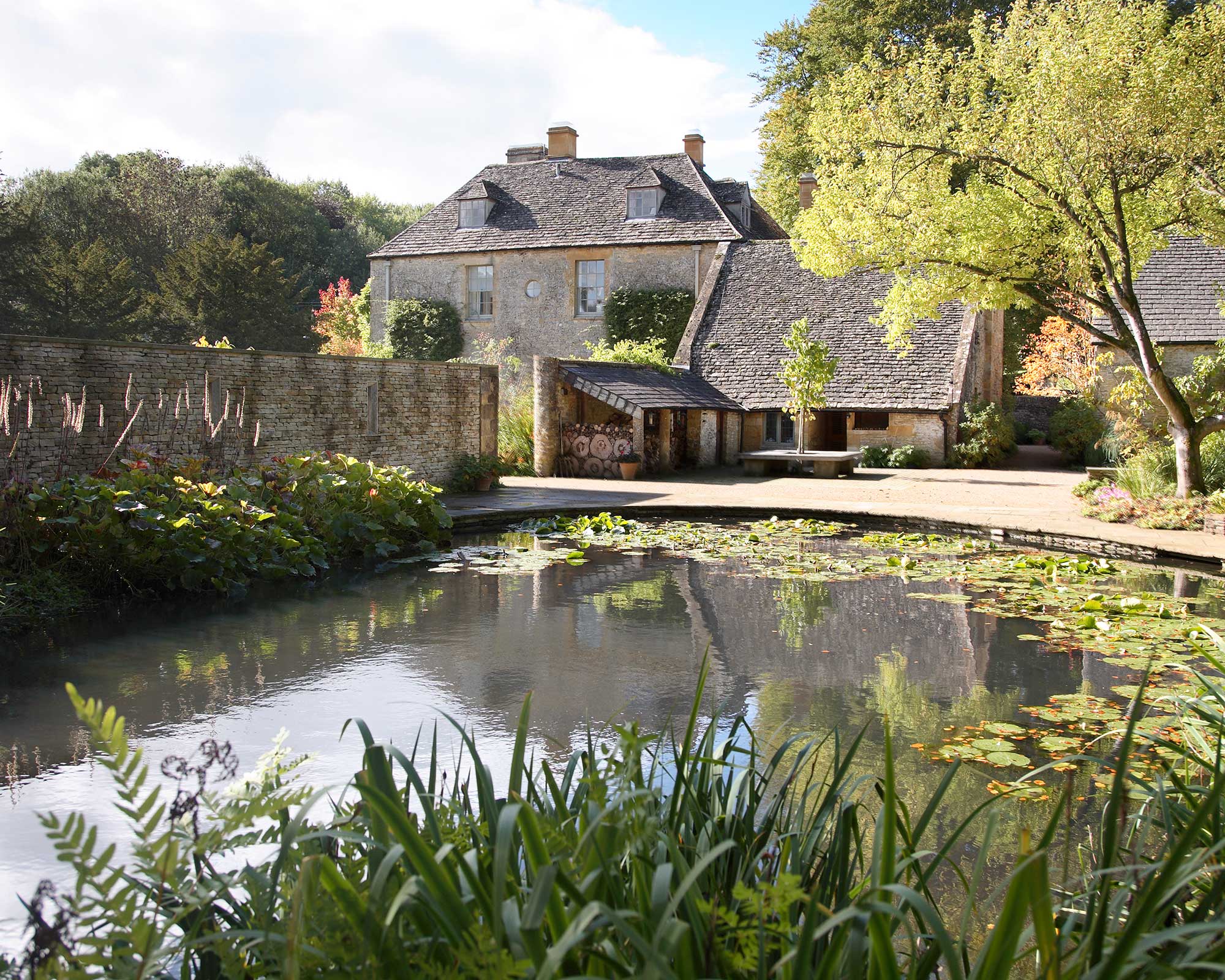
Line one or two sides of a larger pond with soft planting
This large pond is a real focal point for this garden, and is sure to encourage natural visitors. Why? Well, for starters, note the addition of water lilies. These look beautiful, true, but the floating leaves are also ideal resting spots for small creatures. Plus, frogs can lay their eggs on the underside.
Whilst half of the pond has a sleek, paved edge, you'll notice how the other sides have been bordered with a mass of greenery. This provides the perfect place for wildlife to reproduce and hide from predators.
If you recreate the look, just remember to provide a way for smaller creatures to get in and out of the water easily. The RHS suggests building up at least one edge with stones, fitting a wooden ramp covered in chicken wire or cut with grooves for grip, or, for a more natural look, part-submerging a large branch or log. 'This may need weighting down to keep one end below the water line,' they add.
- Looking for more large garden ideas? You'll find plenty of stunning suggestions in our guide.
5. Line with large rocks
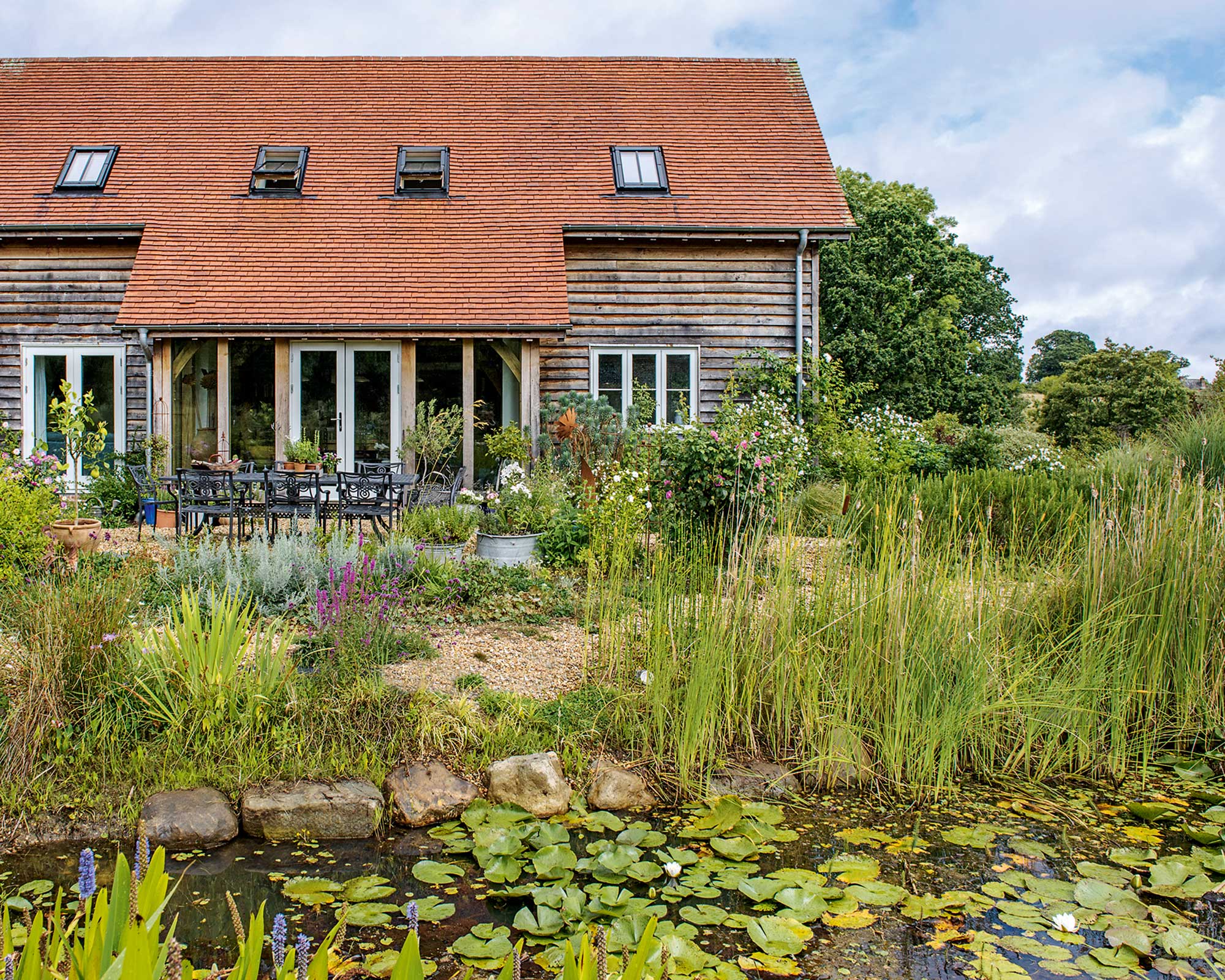
Frogs will love these long pond grasses
Lining the edge of your pond with a series of large rocks will give it a natural appearance (and is an easy way to hide a liner) whilst providing an access point for wildlife.
Interspersing the border with long grasses will also benefit frogs, who will happily shelter amongst the cool greenery. Plus, it will add textural interest too. Common rushes, woodoats and carex are all good picks.
Don't be afraid to allow a small amount of algae to grow, which can provide nutrients to tadpoles. It is best to keep levels somewhat under control though, especially if you have fish. If you decide to reduce the amount of algae with an algaecide, be sure to only use a product that is wildlife-friendly.
6. Create shelter with small trees
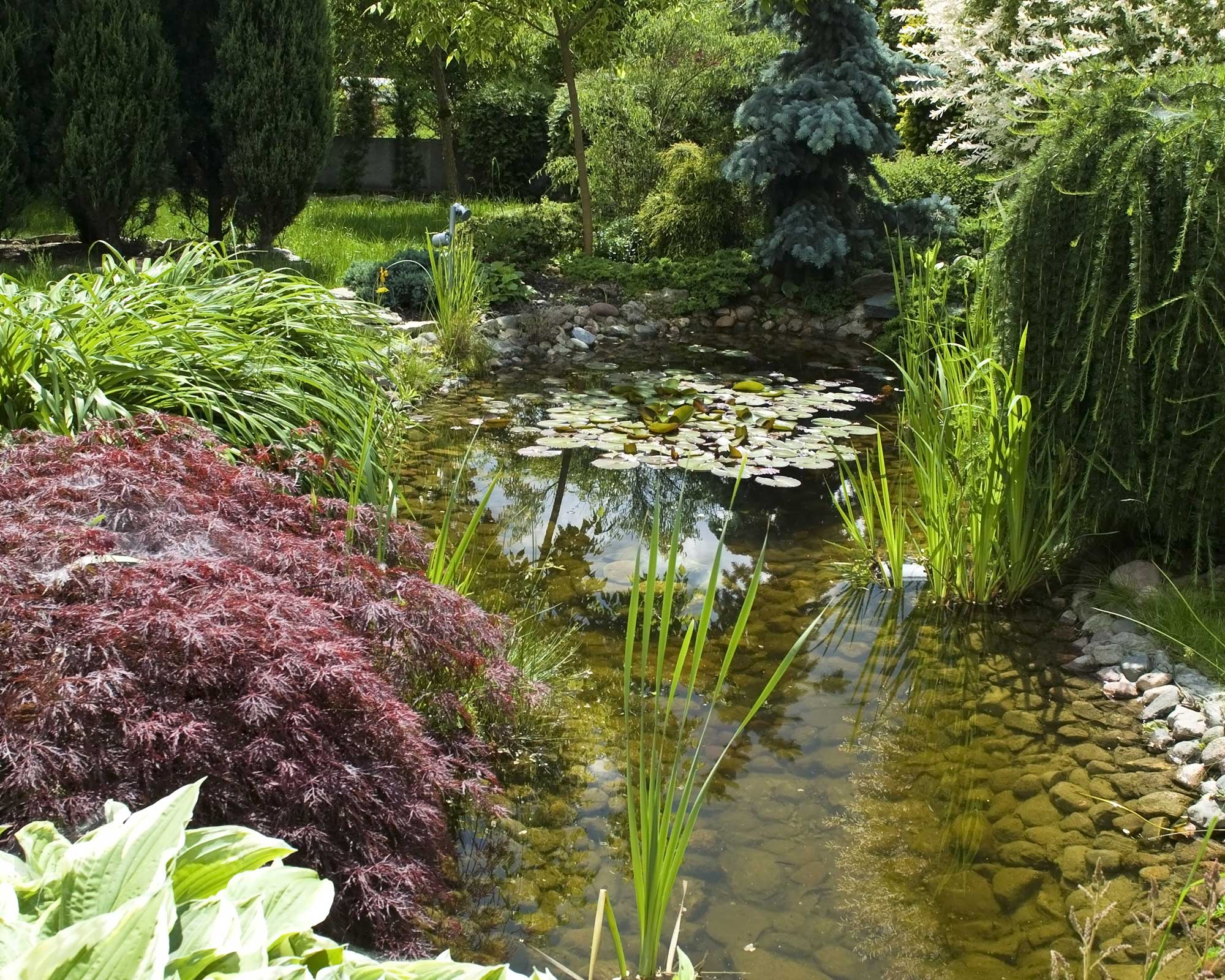
Add shade and color to your pond with an acer tree
Small trees and shrubs can make beautiful wildlife pond edging ideas. They will provide shelter for birds and other creatures, offering extra protection from larger predators as they go to access the water. Trees can also offer shade to a pond to keep it cool, which helps it retain oxygen.
They're useful for preventing erosion of your pond edge too, as well as acting as a buffer for any excess pollutants which may otherwise trickle into your pond due to rain run-off.
A colorful acer is always a lovely choice as will provide vibrant autumn color. If you're looking for Japanese garden ideas, it's a winning option. For larger gardens, a magnolia or a willow would work well. To avoid problems with tree roots potentially piercing your liner as they grow, place bricks around the outside of the liner, or invest in a thicker liner made from rubber.
7. Recreate the natural landscape
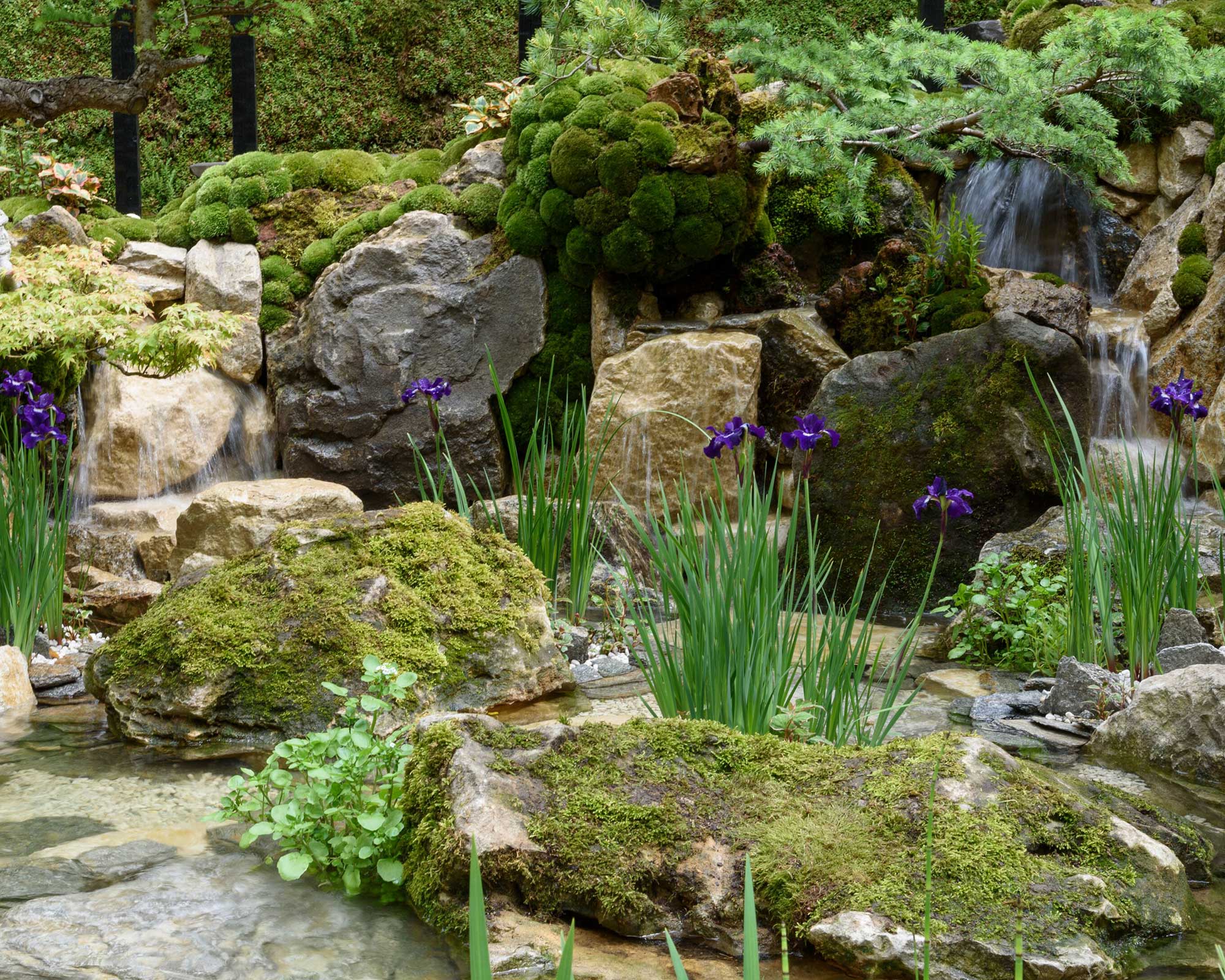
The 'Green Switch' garden, designed by Kazuyuki Ishihara for RHS Chelsea Flower Show 2019
Create your own woodland oasis in your backyard by surrounding a pool of water with large, moss-covered rocks. For a real show-stopping statement, a waterfall won't go amiss either. It will provide an ideal environment for all kinds of wildlife, and will certainly look stunning.
We love the addition of Iris siberica 'Shirley Pope' to this space too, which rises elegantly from the water. Such plants are ideal for damselfly and dragonfly larvae to crawl up when they are ready to turn into adults, explains the RHS. This particular variety is good for attracting bees, too.
'I love watching bright blue damselflies landing on the irises in my pond – they’re so beautiful and it’s great knowing I’m helping local wildlife,' says Ellie Brodie, Senior Policy Manager at The Wildlife Trusts.
8. Go for a gentle slope
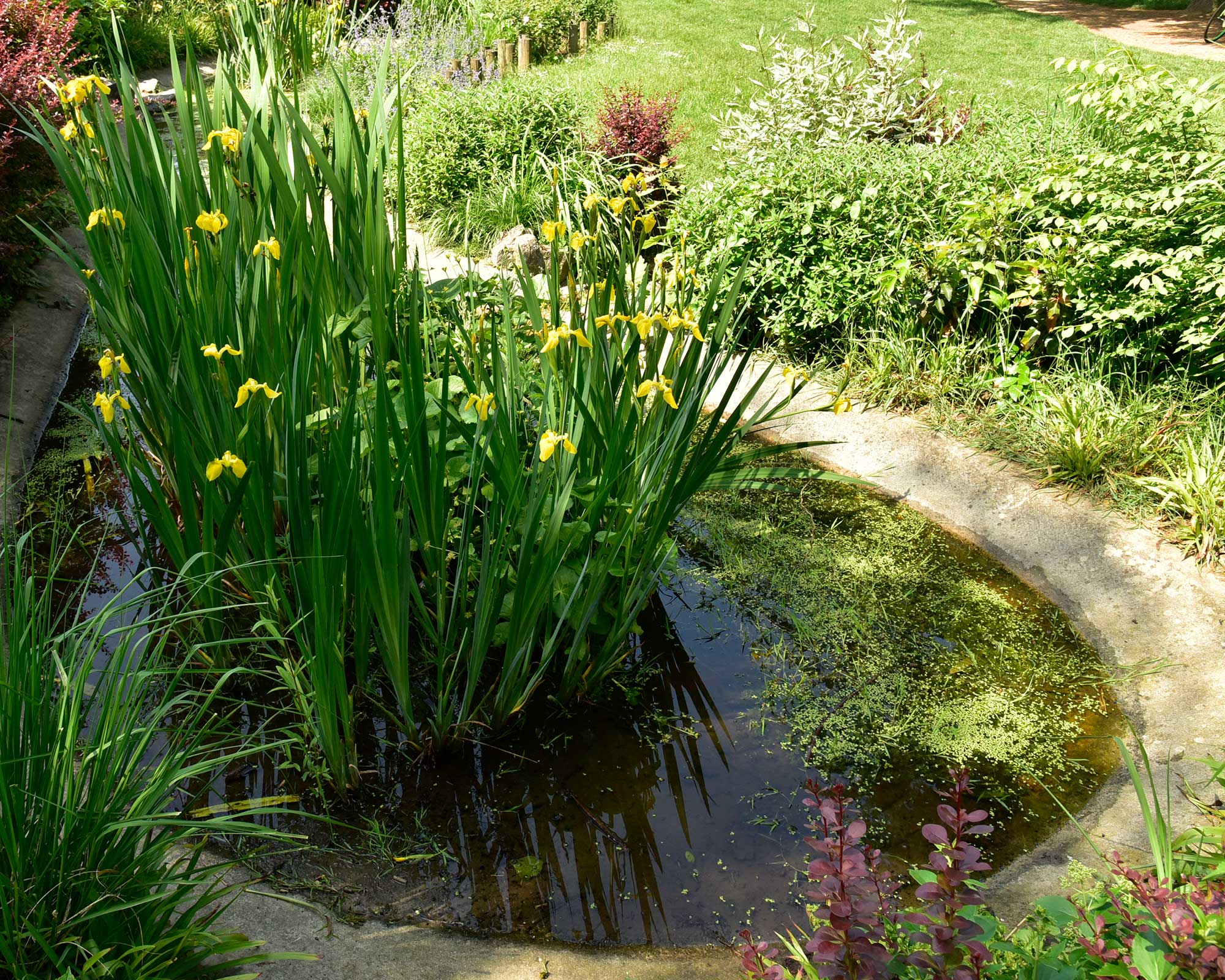
Keep the sides of your pond sloped
We've mentioned the importance of providing easy access when considering wildlife pond edging ideas, and the experts at Homebase agree, explaining how gently sloping edges are a key feature.
This example, made from concrete, has a pleasingly curved shape and will enable smaller creatures to take a drink without falling in. When water levels fluctuate, a shallow, sloping edge will also create a damp habitat vital for many beetles, bugs and flies, as the RHS explains.
Yellow iris (Iris pseudacorus) is a valuable plant for pollinators and provides an eye-catching flash of color. However, if you wish to add it to your small garden pond, it's best to plant it in a basket otherwise it can quickly take over.
9. Add a waterfall to the edge
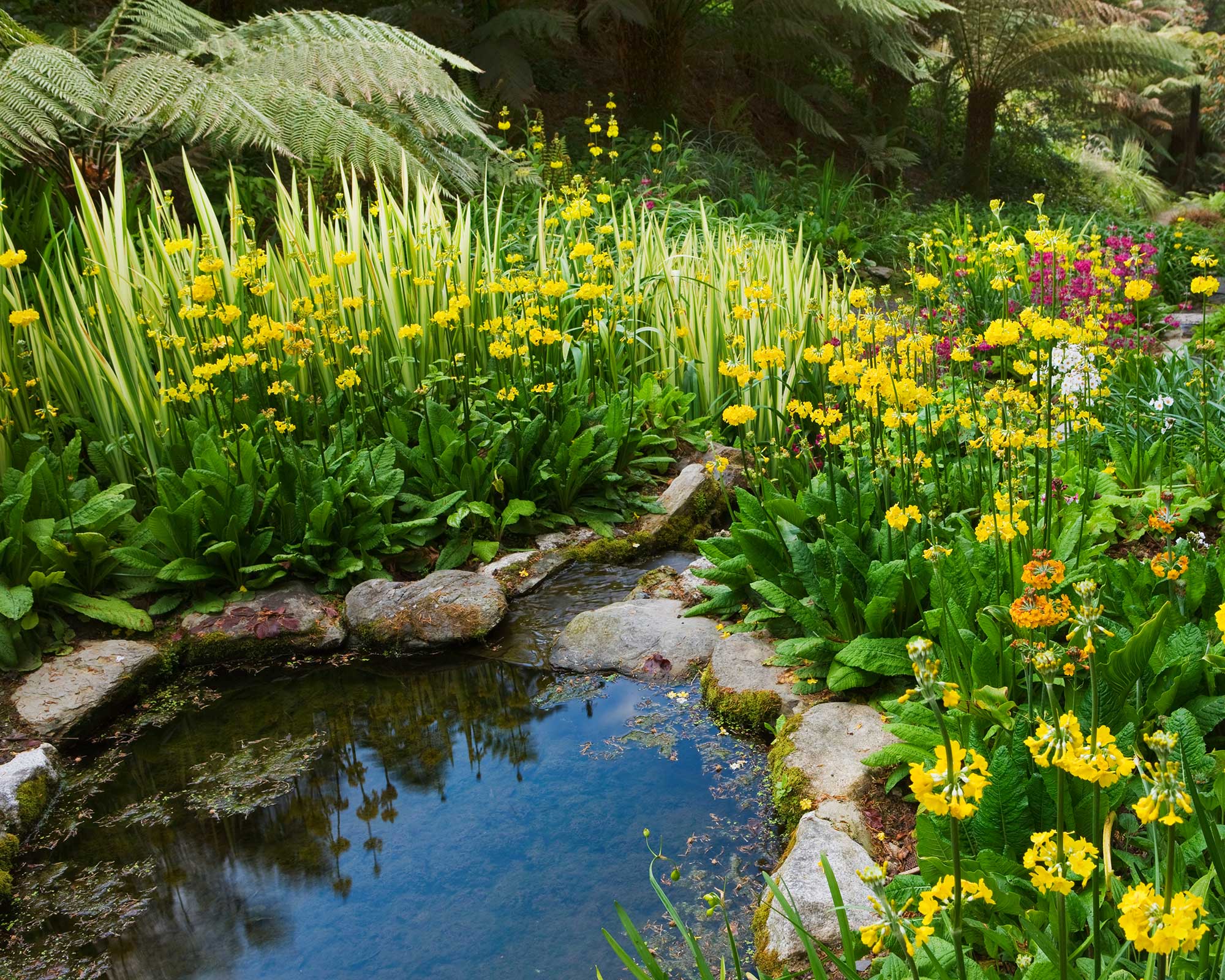
A waterfall will elevate any pond
How beautiful are these candelabra primulas? They're a hardy perennial that thrives in damp, boggy areas and are brilliant at attracting bees. Some varieties are also good for butterflies and moths.
Here, they surround a cool pool lined with a series of stones, but what makes this scene extra special is the waterfall feature added to one side. Not only will this add a gorgeous accent to any backyard, but the shallow stone step at the start is also perfect as a platform for smaller creatures to bathe.
10. Combine an informal border with stepping stones
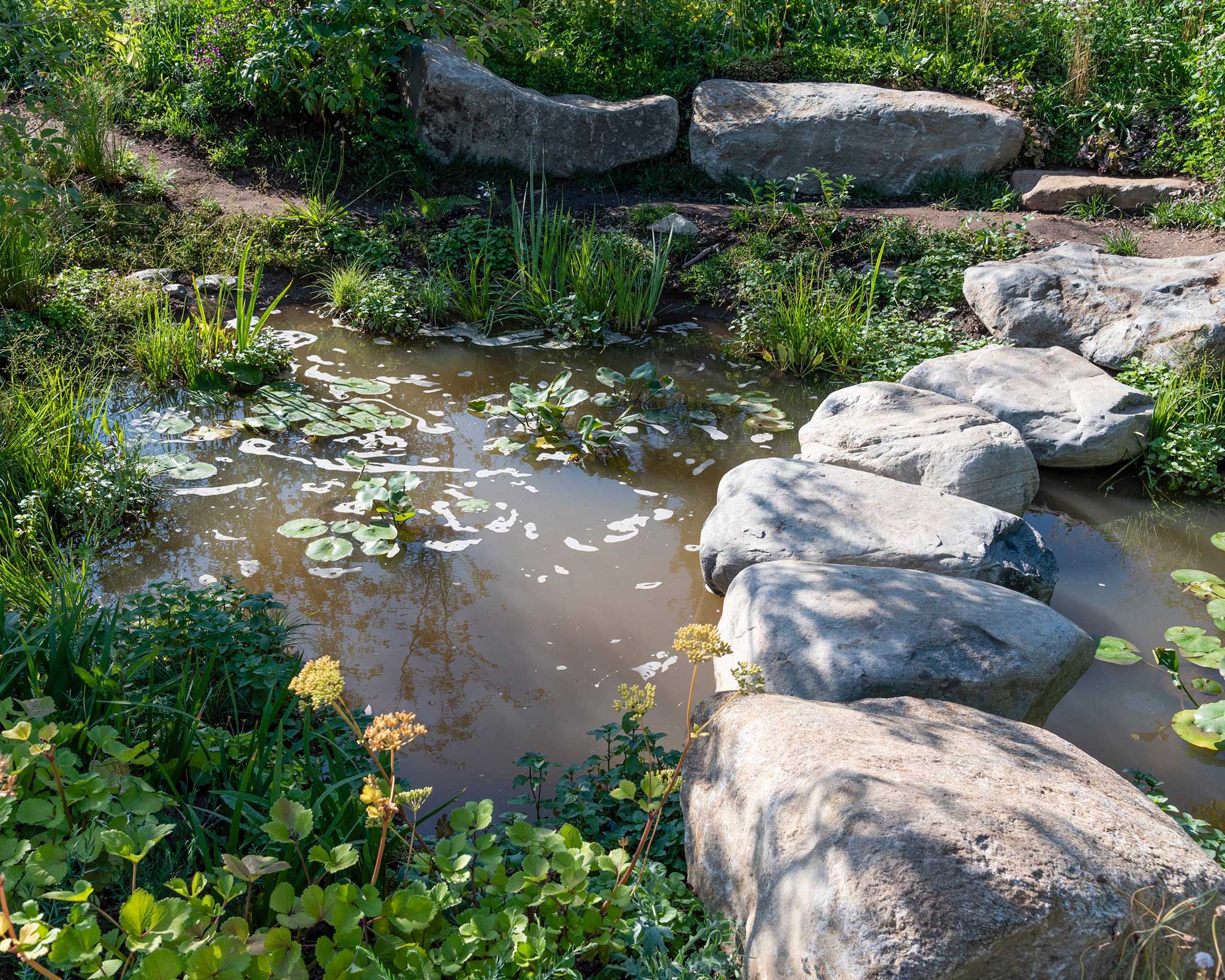
'Countryfile's 30th Anniversary Garden', designed by Ann-Marie Powell for RHS Hampton Court Palace Flower Show 2018
This show garden, designed by Ann-Marie Powell, aims to reconnect visitors with nature. An impressive amount of 12,000 plants were used overall, including over 300 different varieties, 80 per cent of which were native.
The pond area has a natural shape with an informal, planted edge, just like you would see in the wild. Ann-Marie Powell was delighted to see a water beetle move in before the show even opened, as well as visiting chaffinches, red admiral butterflies, bees and damselflies.
The stepping stones add a playful touch and make the scene more interactive. Plus, they'll provide a good viewing platform to watch the wildlife up close.
How deep should a wildlife pond be?
'Shallower ponds can accommodate the vast majority of plants and animals, so bigger isn’t necessarily better,' says Homebase. Just remember to keep that long, gradual slope, at least on one side, when building it.
The Wildlife Trusts and the RHS advises that 6.6ft x 6.6ft (2m x 2m) at 23.5in (60cm) deep is perfect for overwintering frogs. However, a mini pond at just 7.9–11.8in (20–30cm) deep is still valuable for wildlife, they add.
You can find more tips on how to build a garden pond in our practical guide.
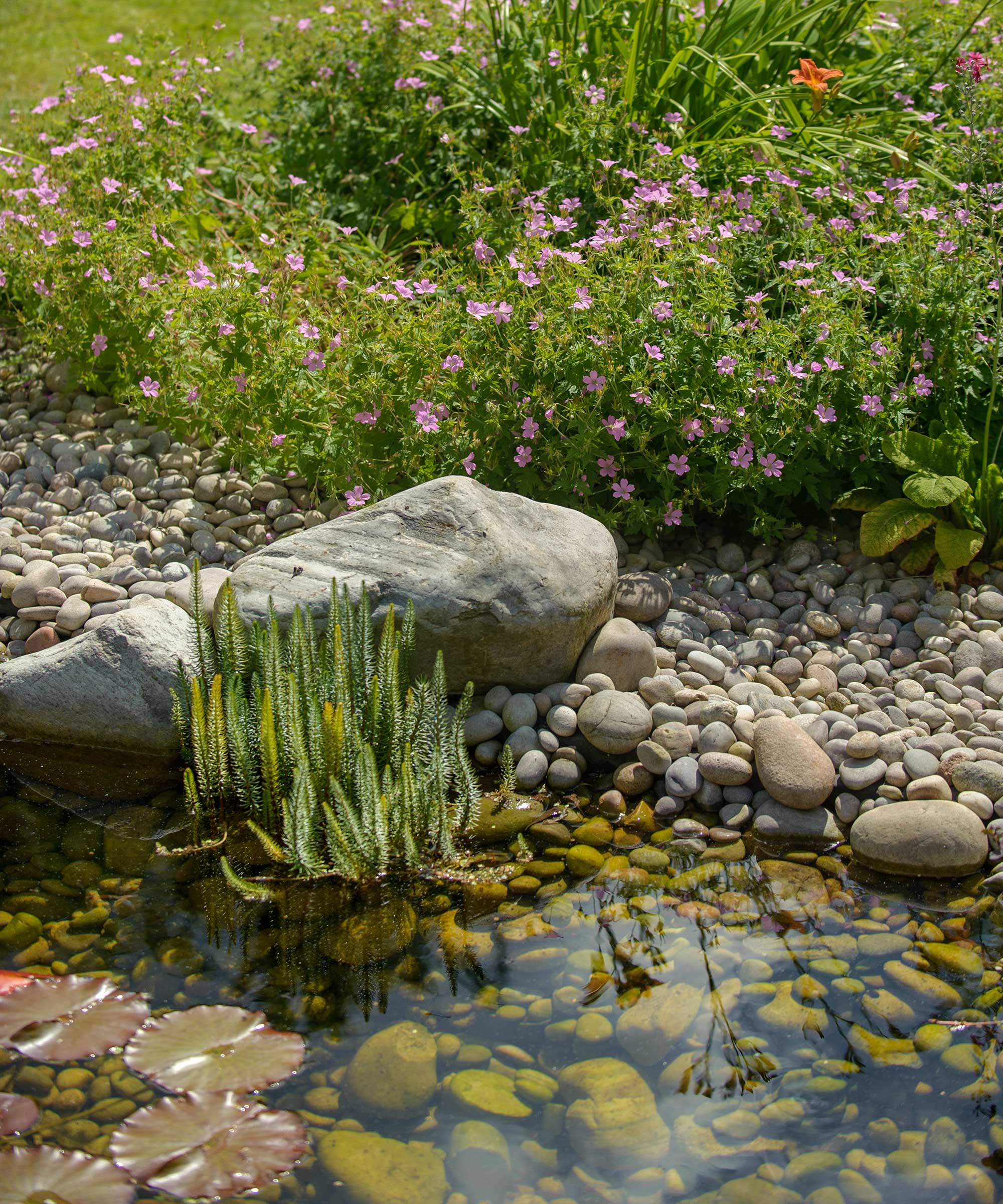
There are plenty of pond plants to pick from
Which pond plants are best for wildlife?
'When buying plants for the pond, there are several different types that are recommended, each with a specific purpose,' says Homebase.
You'll want a few oxygenators – both ones that live beneath the water and ones that float on the top – which release oxygen as they grow to keep the water healthy. Floating plants also provide shade, shelter, and a place for small creatures to rest.
Add plenty of marginal plants around the edge of your pond too – these are varieties that need wet soil to thrive. They'll offer color, textural interest, and places for wildlife to shelter, and can be good for pollinators. The Wildlife Trusts suggests the likes of marsh marigold, silverweed, flowering rush, cuckooflower, and the low-growing ground cover creeping Jenny. Lesser spearwort is another marginal plant that's particularly good for pollinators. Mid-spring to early summer, when the water has warmed a little, are the best times for planting up a wildlife pond, adds the RHS.

The garden was always a big part of Holly's life growing up, as was the surrounding New Forest where she lived. Her appreciation for the great outdoors has only grown since then. She's been an allotment keeper, a professional gardener, and a botanical illustrator – plants are her passion.
